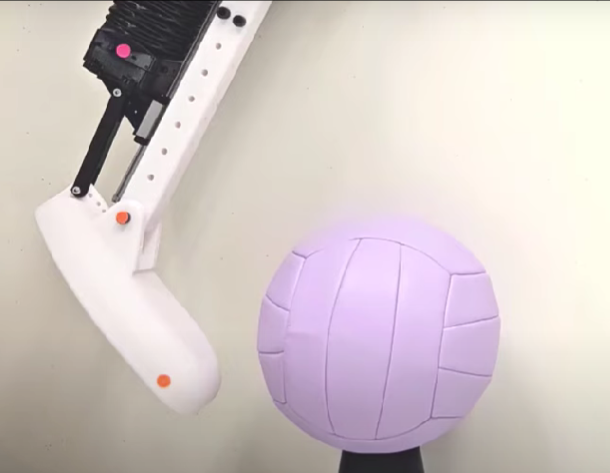According to reports, engineers at Northwestern University have developed a soft artificial muscle that could pave the way for more powerful robotic capabilities in both animals and humans. This new type of muscle, or actuator, provides the necessary performance and mechanical properties required to construct robotic muscle-skeletal systems. To showcase the functionality of this artificial muscle, the engineers implanted it into a life-size humanoid leg, equipped with a rigid plastic 'skeleton', elastic 'tendons', and even a sensor that allows the robot to 'sense' its own movements. The leg employs three artificial muscles—the quadriceps, hamstrings, and calf muscles—to bend the knee and ankle joints. These muscles are flexible enough to absorb impact while still exerting sufficient power and motion to kick a volleyball off its base. This new bionic material innovation could change the way robots walk, run, interact with humans, and navigate the surrounding world. The related research paper was published on July 24 in the journal 'Advanced Materials'. Ryan Truby, a senior author of the study at Northwestern University, stated, 'Robots are typically made of rigid materials and mechanical devices that can precisely perform specific tasks. However, the real world is dynamic and extremely complex. Our goal is to build a robot body with bionic capabilities that is flexible, adaptable, and able to cope with the uncertainties of the physical world.' He added, 'This includes not just practical artificial muscles but also integrating components like bones, tendons, or ligaments into the robot. If we can achieve this, robots will not only become more resilient and adaptive but also improve efficiency by utilizing the mechanics of softer materials.'
Engineers Develop Soft Artificial Muscles for Future Robotics

Share this post on: